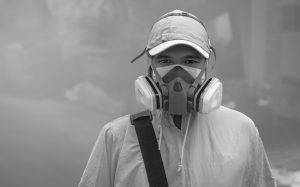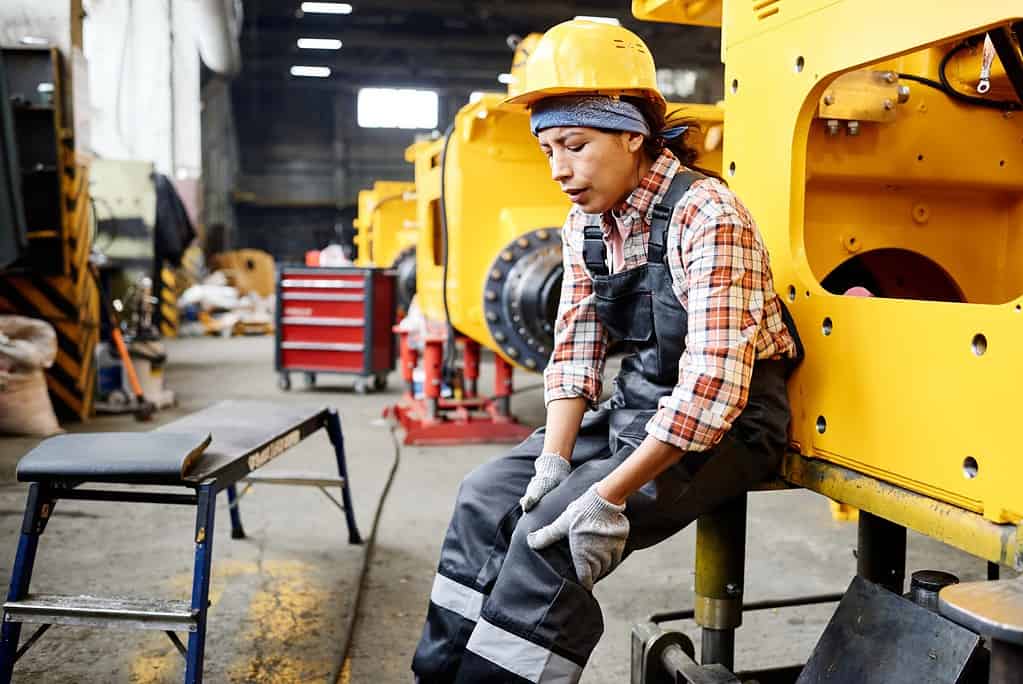Did you know that U.S workplaces recorded 28.3 million injuries and infections between 2010 and 2018? You got that right! Approximately 2.8 million of these accidents occurred in 2018 alone.
Yet, these numbers represent injuries reported by employers only, not for all workplace injuries. Experts estimate that half of the serious workplace injuries go unreported.
Worse, most common workplace injuries are preventable. But the accidents and related injuries still happen thanks to employer negligence and lack of workplace safety.
Considering how common workplace injuries are, your illnesses are likely to be from your place of work.
Read on to learn about the top ten most common injuries in the workplace that you risk getting every time you go to work.
1. Sprains and Strains
Of all workplace-related injuries, sprains and strains are the most common.
Sprains and strains made up 38.4% of all reported injuries in the retail trade. These injuries also accounted for 30.7% of all injuries in the private industry in 2018.
Sprains and strains can be an overstretching of muscles, ligaments, or tendons. But in severe cases, they can be partial or complete tearing of these soft tissues.

Improper bending and sudden body twisting are the main causes of these injuries. They result when reaching for an object above or far from you or lifting heavy objects.
Another cause is improper posture, which half of Americans claim to be worried about. Improper posture strains your tissues and can overstretch them over time.
2. Repetitive Strain Injuries
Just as the name suggests, repetitive strain injury (RSI) is a type of workplace injury caused by repetitively performing motions. Repeating the same action can cause trauma to a worker’s muscles, tendons, or ligaments.
A typical example of this injury is carpal tunnel syndrome, which occurs when the wrists and hands are moved repeatedly in the same way during work.
This injury results from such duties as typing or using a hand-operated machine and affects up to 10 million Americans.
However, RSIs can affect any other part of the body, including causing spinal injuries.
3. Overexertion Injuries
If you are asking, “what is the most common cause of nonfatal workplace injuries?” the answer is overexertion.
Overexertion injuries such as muscle strains and RSIs are nonfatal, but they can result in severe pain and affect overall worker productivity.
Overexertion injury is caused either by:
- Inappropriate lifting techniques
- Lifting heavy objects manually
- Repetitive tasks without breaks
- Collapsing structures
- Lifting, throwing, pushing, or carrying

Employers should probably train employees to perform physical tasks correctly and teach them how to prevent muscle strains.
At the individual level, you can avoid overexertion by taking frequent breaks to stretch and relax and using mechanical lifting tools for heavy objects.
4. Slips, Trips, and Falls Injuries
Slips, trips, and falls account for one-third of all injuries in the workplace. In 2019, 244,000 fall injuries caused employees to miss work.
Slip-and-fall on slippery floors is the most common cause of workplace injury. But falls can also be attributed to:
- Uneven surfaces
- Icy sidewalks
- Tripping hazards left in walkways
These falls result in such injuries as cuts and lacerations, sprains and strains, and fractures. In severe cases, they can cause spinal cord and brain injuries.
Good thing: slips, trips, and falls are preventable. Workers must only be informed to clean up spills, debris, or tracked-in rain. Employers should also strive to mark uneven decks or slippery floors which cause these hazards.
5. Transportation-Related Injuries
If driving is part of your job, you are exposed to weather conditions, defective automotive, or even negligent drivers. Any of these elements can contribute to auto collisions.
Workers whose job revolves around automobiles are also at risk of being hurt in a crash. For example, working in a warehouse, a forklift could run over you. A construction worker could also be hit by a tractor.

Such accidents can leave you with life-changing injuries like head injury, spinal cord injury, or even lead to death. Companies should implement safe driving guidelines and emphasize defensive driving.
However, there are cases where motor vehicle accidents result from the negligence of another party, not a colleague or employer. If this happens, you should consider pursuing a third-party claim.
6. Injuries from Being Struck by Falling Objects
More than 50,000 OSHA accidents of being struck by objects are reported every year. Most of these incidents are preventable with the use of appropriate safety gear.
Typically, a heavy object can fall, roll, or slide and cause injuries such as cuts and bruises. An example is a building tool slipping off and crashing on a few individuals or a tree falling on loggers.
Such accidents may cause blunt force trauma, leading to more severe fractures. If an object lands on your head, you can suffer a traumatic brain injury.
Safe storage of materials and placing warning signs in debris-prone areas can help prevent struck-by injuries. Employers could also provide appropriate protective gear for their workers.
7. Injuries from Walking into Objects
Walking into a stationary object can seem funny or even embarrassing. But it can cause severe injuries.
A worker can unintentionally run into or get pushed into a wall, cabinet, window, machinery, or vehicle and suffer head, neck, knee, or foot injuries.
Sometimes these accidents happen because the worker did not pay attention to where they are going.

For example, cell phone use has increased eight-fold in the last 15 years. Cases of walking into walls and motionless objects have increased correspondingly, according to the National Safety Council.
Such accidents could be reduced by maintaining clutter-free workplace environments and marking obstacles and hazards.
Additionally, companies can enforce policies prohibiting workers from using their phones when engaged in work activity.
8. Injuries from Workplace Violence
If you have been asking, “what are the most common injuries in the workplace” violence is one. According to BLS, workplace violence is the third leading cause of workplace fatalities.
Violence can erupt from disputes arising on the job between co-workers. Workers dealing with the public, such as delivery personnel, can face assaults from customers or attacks by dogs.
In cases of physical fights, a blow can land on your head and cause a concussion, brain hemorrhage, or even a skull fracture. The worst outcome of a punch to the head is that it can kill.
As a recommendation, employers should have a zero-tolerance policy to protect against workplace violence. They should also create communication channels for reporting cases of assault.
9. Injuries from Harmful Chemicals and Fumes
Exposure to hazardous substances exposure can also cause workplace injuries and illnesses.
The harmful substances can cause a skin condition known as contact dermatitis. Contact dermatitis accounts for up to 20 percent of all occupational diseases.
Some chemicals, such as asbestos, are carcinogenic. Others like hydrochloric acid are corrosive, so they destroy human skin.

Direct exposure to such chemicals can cause rashes, burns, and open wounds. When inhaled, the substances can cause lung and throat injuries.
If your workplace exposes you to hazardous chemicals, you should always wear protective gear such as gloves, safety goggles, and other necessary personal protective equipment.
10. Hearing Problems
Every year, 22 million American workers are exposed to high workplace noise. That’s especially true for construction, mining, and manufacturing workers.
An NIH study showed that up to 7% of employees who are not always exposed to noise suffer hearing loss. Another 5% have tinnitus, and 2% suffer from both.
The same study reported that these rates go much higher among workers exposed to noise. Among these, 23% suffer hearing loss, 15% from tinnitus, and 9% suffer both maladies.
According to the CDC, a quarter of worker hearing problems is associated with the workplace. Such hearing problems are commonly caused by exposure to louse noise and chemicals.
Bottom Line
Workplace accidents happen, often in ways that we don’t anticipate. Fortunately, there are steps that employers can take to protect their employees from workplace injuries.
Employers can implement clear safety policies and procedures to ensure all employees are well-trained on safety precautions.
Notice that workplace injuries don’t affect victims only; they can also cause huge reputational or financial damage to the company.
It is in everyone’s best interest to improve workplace safety in all possible ways.

